A new study takes a closer look at audiometric testing in pediatric patients

Otolaryngologists at Cleveland Clinic sought to evaluate audiometric testing in pediatric patients with auditory neuropathy spectrum disorder (ANSD), a hearing disorder characterized by dysfunction in the transmission of sound, and identify how the timing of the test may affect results. They reported their findings in the International Journal of Pediatric Otorhinolaryngology.
Cleveland Clinic is a non-profit academic medical center. Advertising on our site helps support our mission. We do not endorse non-Cleveland Clinic products or services. Policy
While the exact etiology of ANSD is unknown, the condition is characterized by a disorder in the transmission of sound from the inner ear to the brain. Previous studies have shown that up to 15% of pediatric hearing loss may be associated with ANSD1. The advent of universal newborn hearing screening programs in the U.S over the past two decades with combined use of oto-acoustic emissions (OAEs) and auditory brainstem response (ABR) testing has led to earlier diagnoses and rehabilitation for patients with the condition.
“There is also wide clinical variability in presentation and symptoms, which contributes to a growing need to understand and treat the disorder,” says Samantha Anne, MD, pediatric otolaryngologist in Cleveland Clinic’s Head & Neck Institute and senior author of the study.
Using audiometric data obtained from Cleveland Clinic and Texas Children’s Hospital, the researchers aimed to examine correlations between pure tone averages (PTA) and speech detection thresholds (SDT) over time. PTA is an evaluative measure to determine a patient’s average hearing threshold in dB HL at 500, 1000 and 2000 Hz, three frequencies thought to best represent the typical ranges heard in speech. SDT tests a patient’s ability to recognize the presence of sound; it is administered by an audiologist using their voice to obtain a response from the child at a certain decibel level. Typically, a child responds best to their name being called, however, other children respond best to nonsense words that carry a different intonation or their favorite song being sung. It does not matter which voice stimulus they respond to, only that their response is reliable.
Dr. Anne and colleagues aimed to better understand the evolution of ANSD by evaluating PTA and SDT data from patients’ first and most recent testing.
After exclusionary criteria were applied, an analysis was performed on 50 ears (28 patients). ANSD can present itself bilaterally or unilaterally, therefore, the physicians evaluated each ear with ANSD separately. The median age for the first and most recent audiograms was 1.94 (0.45–13.68) and 4.22 (0.97–14.61) years, respectively. On initial audiograms, the average SDT and PTA were 47.5 and 45.7 dB, respectively. On the most recent audiograms, the average SDT and PTA worsened to 49.4 and 53.0 dB, respectively.
The researchers then performed an analysis to determine associations between PTA and SDT, evaluating both initial and most recent audiograms. Among the key findings, the team identified a strong correlation between SDT/PTA (R = 0.82, P < 0.001) performed at the same time and between initial and most recent SDT audiograms (R = 0.73, P < 0.001). Although less strong, there was still a statistically significant association between initial PTA to most recent PTA (R = 0.51, P < 0.044).
Joseph Meleca, MD, otolaryngology resident in the Head & Neck Institute and first author of the study, remarks, “The findings showed an inverse relationship between PTA and age for individual patients, meaning that patients’ PTA improved with age.” He notes that this may be confounded by younger patients having resolution of ANSD and older patients with more severe hearing loss having undergone cochlear implantation.
“In a child with typical hearing loss, we expect to see a good agreement between their PTA and SDT. Initially, their PTA is obtained through the ABR and behavioral testing begins shortly after. In a child with ANSD, the ABR does not give us threshold information, making behavioral testing the only way we can measure hearing.” says Whitney Lyle, AuD, audiologist at Children’s Hospital Colorado and co-author on the study. She continues, “This study suggests that the agreement between PTA and SDT is also seen in children with ANSD, providing confidence that the child’s behavioral responses are reliable. Because we cannot use ABR threshold data, early behavioral testing is essential.”
Dr. Anne says, “Having a better understanding of how these patients perform on audiometric testing is critical for this patient population. The reality is, a child’s behavioral response — their willingness and ability to tolerate the test during the appointment — plays a role in the data we obtain during testing. If we can understand how they are performing on testing, we can better equip them with hearing rehabilitation.”
Overall, the research provides evidence of a correlation between SDT and PTA over time in ANSD patients. This information may help clinicians feel confident making the decision to fit children who present with hearing loss with amplification based on the initial audiometric testing they are able to obtain. Dr. Anne concludes, “Ultimately, it is crucial to maintain close surveillance of patients diagnosed with ANSD.”
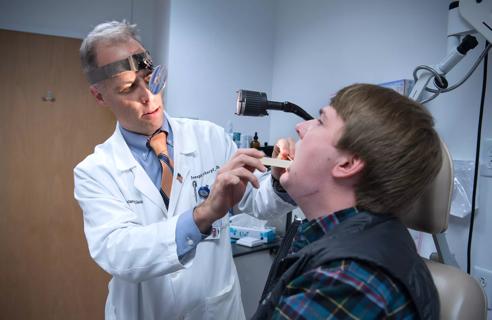
Strong communication with the patient and a thorough approach are essential
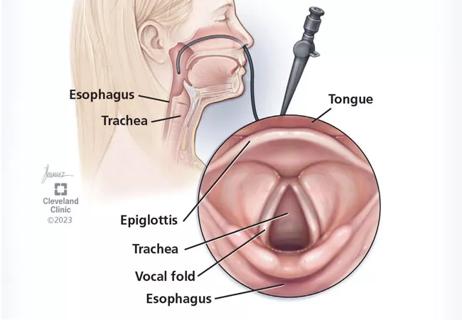
Cleveland Clinic physicians weigh in

New research adds to understanding of an understudied link
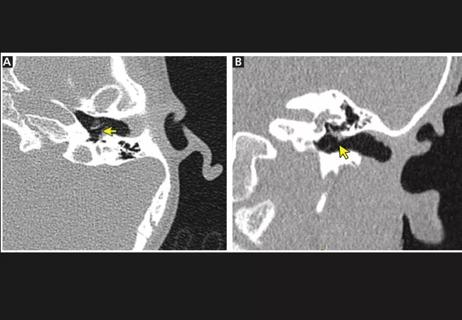
The rare condition can cause structural damage if untreated
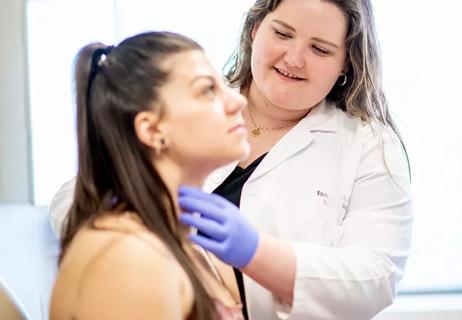
A recently published case series highlights the broad range of laryngeal findings that can present among individuals with EDS

Newly published research shows how the surgical technique is a game-changer for patients with ORN

First five-year prospective study provides valuable data to guide decision-making
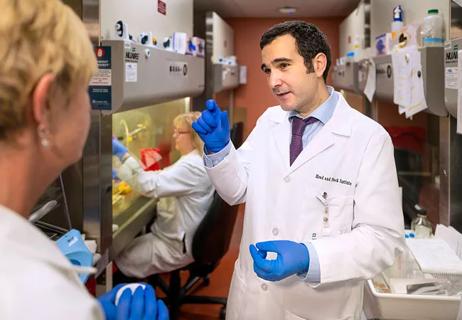
The Head & Neck Institute will make its initial footprint in the newly constructed BioRepository building